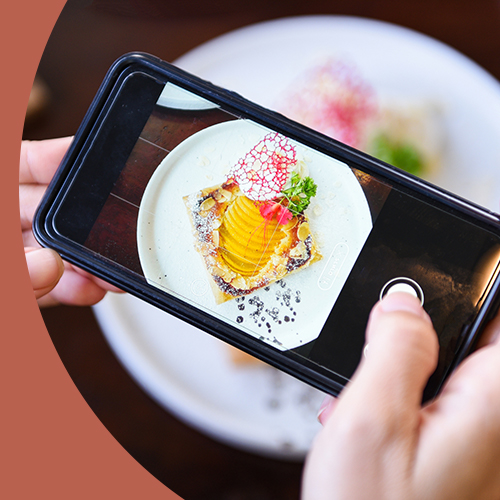5 best practices for email marketing
Did you know that 60% of marketers consider email marketing as the strategy that generates the best ROI? In fact, sending personalized emails to your guests on a regular basis helps to keep them informed and win their loyalty. Emails are used to promote your property, generate interest and encourage your prospects to book a first stay in your hotel.
Thereby, email marketing is a powerful tool if used wisely and could be 40 times more effective than content posted on social media. This marketing strategy helps you communicate with a large audience in a targeted way and therefore, initiates, maintains and consolidates your relationship with your guests and prospects.
Moreover, email marketing is very popular, since over 280 billion emails are sent everyday. To make it effective, your message must stand out by being relevant and personalized. Finally, email marketing is an inexpensive solution compared to the cost of marketing actions such as Google Adwords, social media campaigns or even content creation used to improve your organic positioning.
After defining your objectives, your targets and your performance indicators allowing you to measure the effectiveness of your strategy, here are some good practices to follow!

Focus on content
First of all, you can use your Hotel PMS to better segment your database by targeting and personalizing your emails. You also have the possibility to create contact lists based on several criterias such as the language, the city, the amount of stays spent in your property, the number of points accumulated, the type of stay, the price of stay, the package purchased and many more.
Furthermore, it’s very important to focus on quality rather than quantity. To keep your reader’s attention, your message should take less than 1 minute to read. To be effective, your main message should be included in the subject line and the main title of your email. It is proven that 47% of readers choose whether or not to open an email, depending on its subject. This is why it is important to avoid excessively long email subject, exceeding 60 characters. In the case where your open rate is not as high as you would like it to be, you should try to change your email subject, do an A/B test or try to change your approach by adding something more original.
The most important information should be prioritized and placed at the top of your email. Good content is short, punchy, straight to the point and should encourage your customers and prospects to make a reservation at your property. For example, you could put the highlight on exclusive promotions, attractive activities’ discounts or interesting statistics that would pique their curiosity. Try to personalize your content as much as possible so your readers will feel privileged and special. Additionally, you can include personalized tags, emojis or references to a previous stay depending on your target.
Your content must be as easy to read as possible: favor a line spacing of 1,5, use bullets or dashes. Your font should be standardized and secured “web safe”, such as Arial, Times New Romans, Georgia or Verdana. For a property, keep in mind that you need to make your readers dream, most importantly by using good quality pictures. Readers should be able to imagine themself at your property. The content and images should make them want to be there.
Finally, remember that even if you have good quality content, if your email subject doesn’t interest your readers, they won’t open your email and never have the opportunity to read your content.
Make call-to-action buttons visible
About call-to-action buttons, they are used to encourage readers to act, whether it’s to make a reservation on your website or get more information about your services. Therefore, favor a simple, clean and attractive design that will highlight your property. Also, your call-to-action button must be clear, visible, easily clickable and should stand out from your content. Overall, the recommended size of a call-to-action button is minimally 44 x 44 inches. Moreover, the position and the text are also strategic and should encourage your readers to click.
Keep in mind that these buttons have to be correctly redirected to your website or to your booking engine, depending on the result you want. Since it is a web experience, putting a phone number inside your call-to-action will disrupt the user experience and often distract your readers’ attention.
Choose colors that catch the eye
Your design reflects your property’s graphic identity. It also makes it easy for your readers to recognize you. If you want to pique your readers’ curiosity in seconds, it is better to choose simple, non-aggressive and contrasting colors for the text and your email’s background. Note that there are two types of contrast: the positive contrast, which consists of having a light color on a dark background, and the negative contrast, with dark color on a light background.
Use animated GIFs
Your readers love to see beautiful images so why not use them for your newsletters? Indeed, animated images, also called GIFs, bring life to your emails. It is very representative, expressive and has the power to transmit a message immediately. Thus, make sure that your GIFs are not too voluminous so it won’t impact your email’s loading. Furthermore, avoid using an image in the background, so it doesn’t saturate your newsletter. Choose a plain colour to help your readers focusing on your content.
Promote mobile optimization
Over 50% of people use their smartphones or tablets to read emails. Thus, 80% of those same people will no longer open newsletters if they are not displayed correctly on their mobile phones. This is why it is essential to test and ensure that your emails are responsive and adapt to different devices. We recommend your newsletter to be no larger than 600 pixels in width, so it can properly be displayed on different electronic devices.
Keep in mind that the easier it is to open and read your newsletters, the more engagement towards your database you will get.
Before sending your newsletter, make sure to test on different messaging services, since they don’t use the same deliverability options. These tests will allow you to verify if everything is optimized and will prevent your readers from encountering challenges in viewing your emails. Otherwise, they could end-up unsubscribing from your newsletters. Making tests will also allow you to check links and make sure that each of them redirects to the correct page. Plus, you can perform A/B testing to find out which email subject line would get a better open rate. Isn’t it fantastic?
 Log in
Log in


























